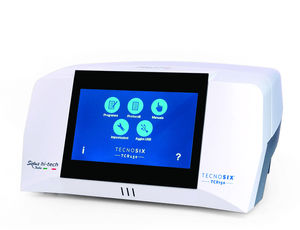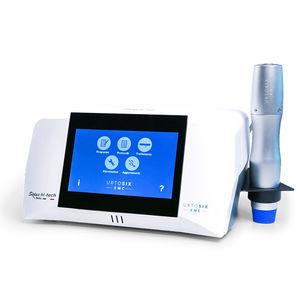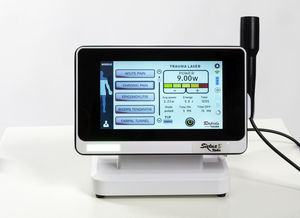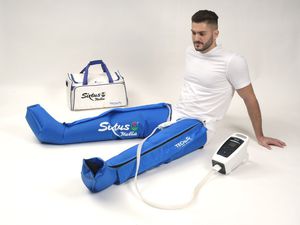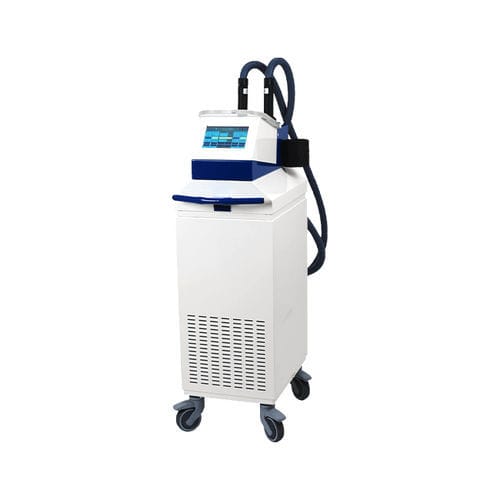
- Company
- Products
- Catalogs
- News & Trends
- Exhibitions
Cryotherapy unit Criosixultrasound diathermy unittrolley-mounted2-channel
Add to favorites
Compare this product
fo_shop_gate_exact_title
Characteristics
- Type
- cryotherapy unit, ultrasound diathermy unit
- Ergonomics
- trolley-mounted
- Number of channels
- 2-channel
- Weight
75 kg
(165.35 lb)- Length
64 cm
(25.2 in)- Height
150 cm
(59.1 in)- Depth
59 cm
(23.2 in)
Description
Cryoultrasound therapy combines the advantages of ultrasound with the possibilities of cryotherapy
Cryoultrasound therapy uses ultrasound combined with another technique, cryotherapy: what can be defined as cold ultrasound. This combined use helps reduce any kind of contraindication of the effect of ultrasound in trauma care.
It is especially effective for treating inflammation thanks to the anti-inflammatory effect that ultrasound has, combined with the analgesic action of cryotherapy. Cryoultrasound therapy began to be successful in the sports field precisely because of the rapid rehabilitation it offered for every sportsperson, and then made its way into more traditional therapies.How does cryoultrasound therapy work?
Ultrasound and cold are the basis of cryoultrasound therapy
This type of therapy makes use of two features: cold and ultrasound. Cold inhibits pain receptors and reduces blood flow, thus controlling the formation of oedema in the affected area. Ultrasound, on the other hand, emits sound vibrations at very high frequencies that are inaudible to the human ear and, in contact with the tissues, produce mechanical, thermal, chemical and cavitation effects. The benefits are anti-inflammatory, anti-oedema and pain-relieving. In fact, thanks to the increase in temperature caused by ultrasound, vascularisation is increased and the molecules that caused the inflammation are eliminated. The cold, meanwhile, has analgesic effect that help alleviate contractures. The ultrasound also make the cells of the injured tissue vibrate which causes a micronised massage that penetrates deeply and helps ensure a soothing effect.
Catalogs
Electromedical Devices
32 Pages
Exhibitions
Meet this supplier at the following exhibition(s):

Related Searches
- Tabletop laser
- Nd:YAG laser
- Tabletop physiotherapy
- Millisecond laser
- 2-channel physiotherapy
- Class 4 laser
- Heat therapy unit
- Trolley-mounted physiotherapy
- 1-channel physiotherapy
- Extra-corporeal shockwave therapy unit
- Pressure therapy unit
- Physical therapy laser
- Magnetic therapy unit
- Musculoskeletal disorder ESWT unit
- Physical biostimulation laser
- Ultrasound diathermy unit
- Leg pressure therapy unit
- Table-top ESWT unit
- Tecar therapy unit
- Transportable physiotherapy
*Prices are pre-tax. They exclude delivery charges and customs duties and do not include additional charges for installation or activation options. Prices are indicative only and may vary by country, with changes to the cost of raw materials and exchange rates.



